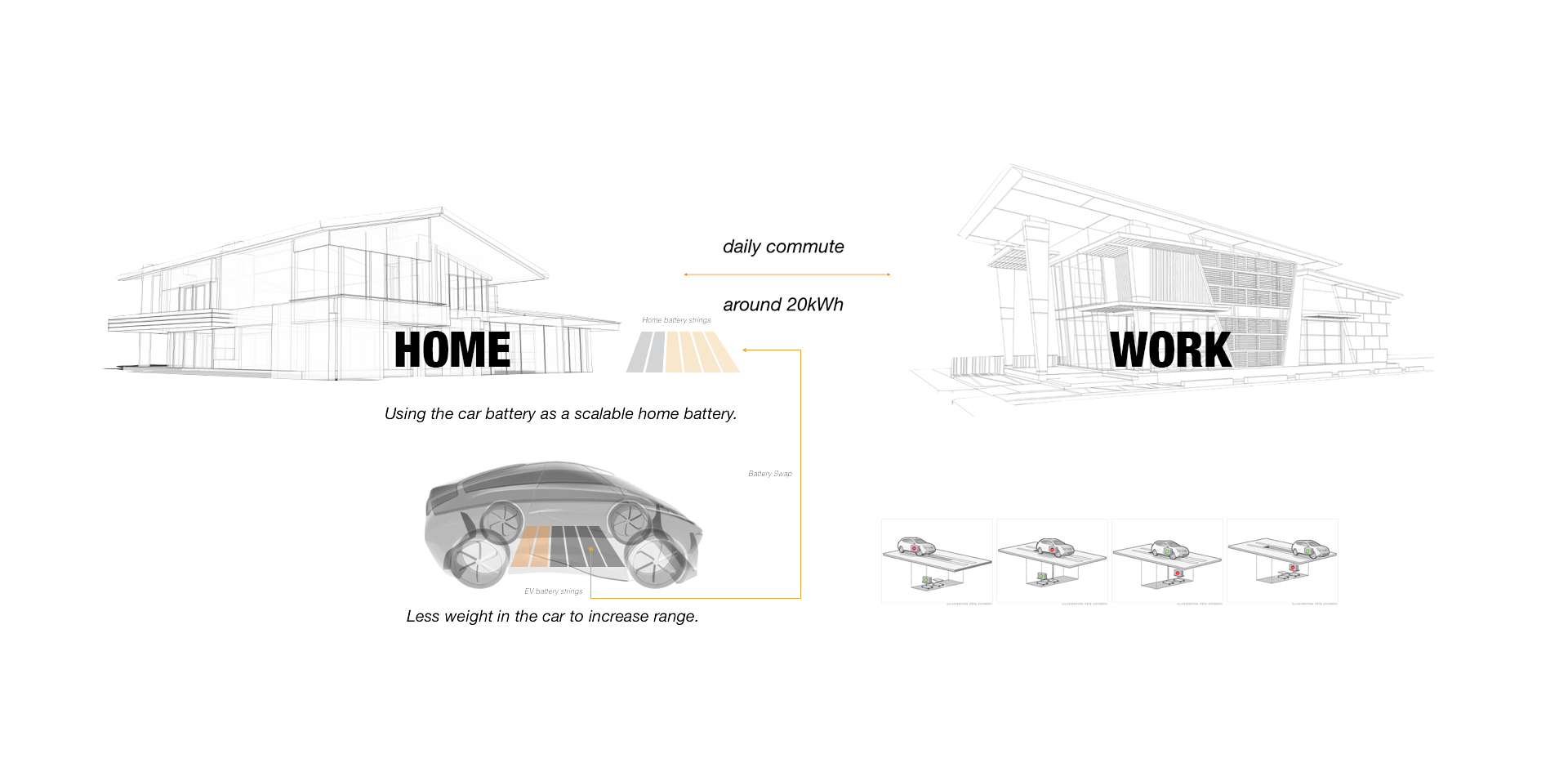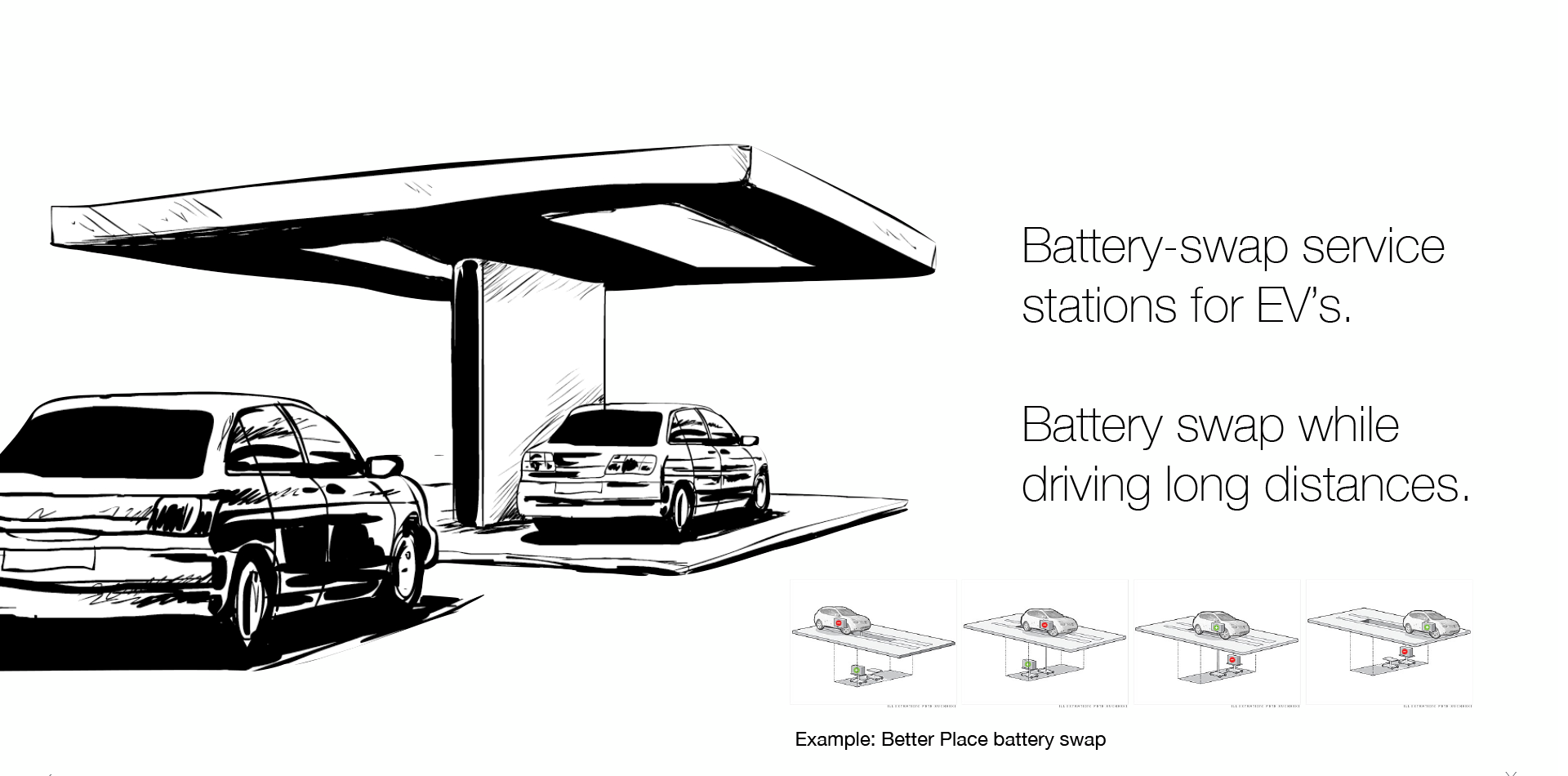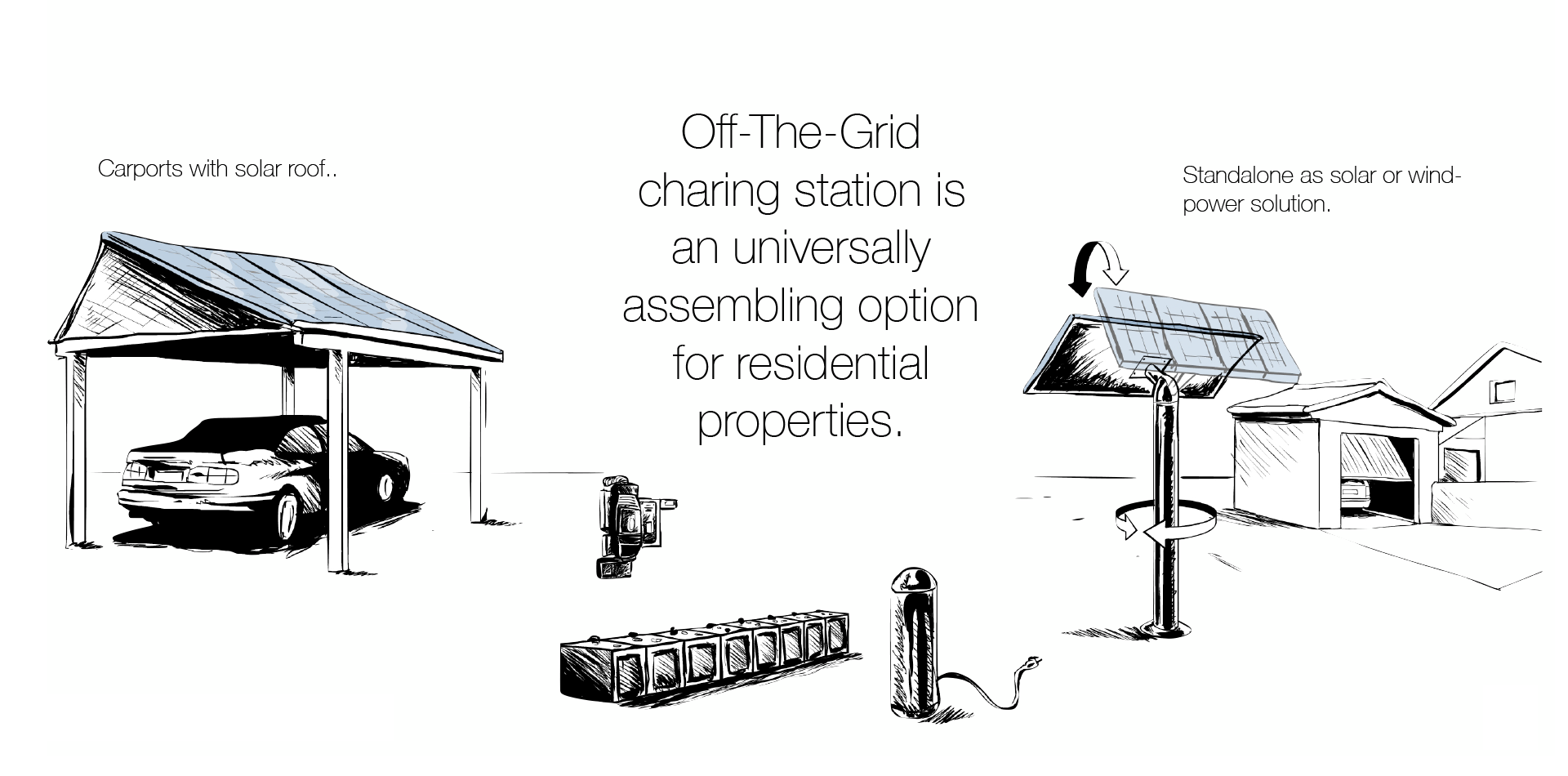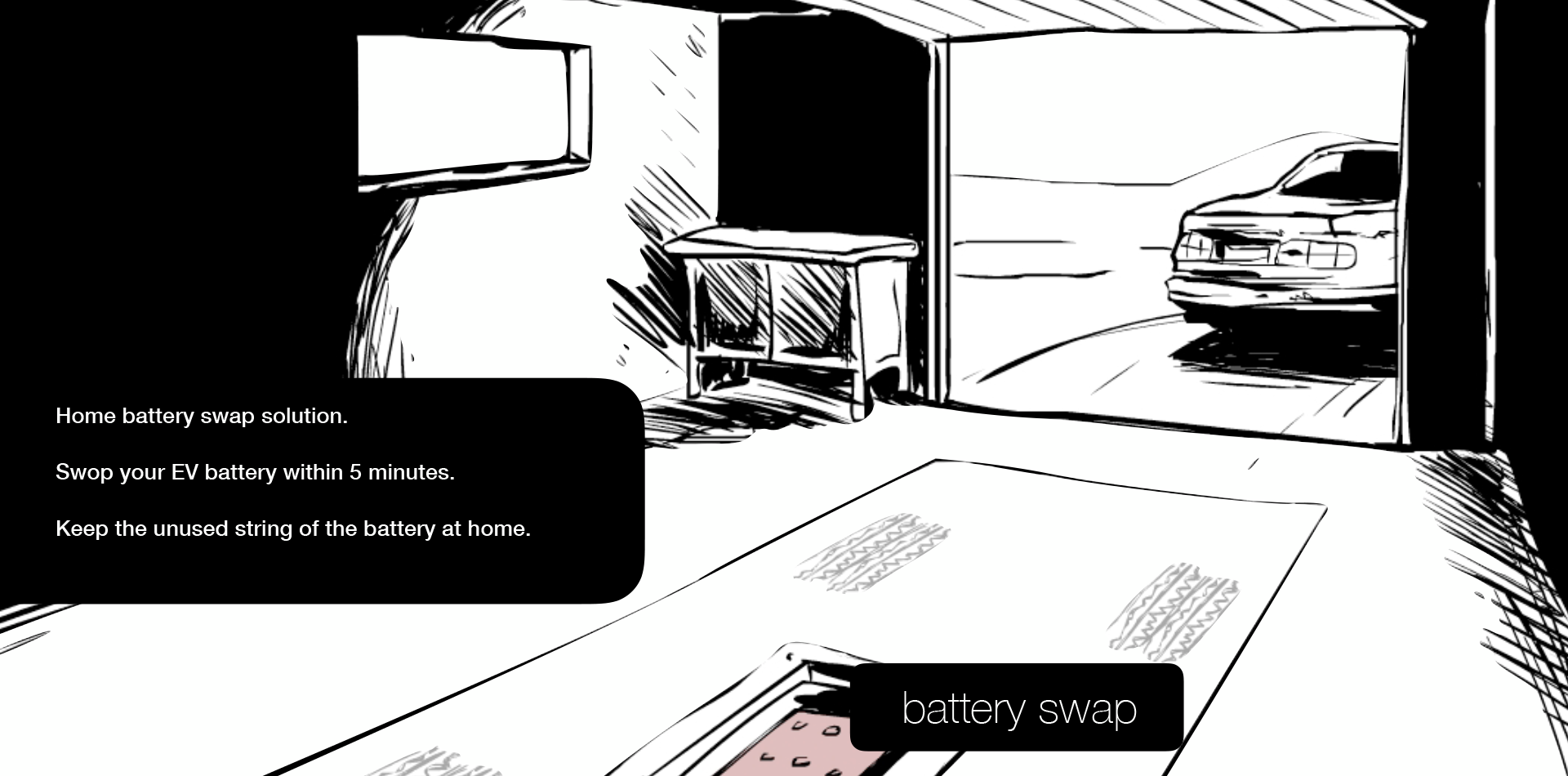My Car
As Powerwall
Let's use what we already have.

How far do we want to go?
When Elon Musk asked the people at the grand opening of Tesla's flagship store in Paris about the future range of their Tesla cars, they answered “we want over 600 miles”. He responded that it is achievable within the next two years. But is that really what we need? A bigger battery? This way of thinking comes from our experience driving a gasoline car. Charging once and then going as far as possible. The truth is, if we could charge our cars everywhere and anytime, we could basically drive endlessly. A look at the current Tesla Supercharger map shows we already are able to drive from the east to the west cost, from Seattle to the Florida Keys. Imagine if we could also charge our cars at the barbershop next door, at our best friend's house, at the hotel on our way. Then we wouldn't need a bigger, more expensive and heavier battery. Not to mention it also takes longer to charge a bigger battery.
What do we really need?
My Tesla Model S has a 70kWh battery capacity and a range of around 230 miles. That is more than enough for my everyday commute. The reality is that our average commute is only around 25-35 minutes. We also charge our EV’s at home overnight or while working at the office. That covers the day to day need. But interestingly, it takes only 25% of the battery capacity. That means we already carry a lot of extra weight, everyday. Keeping in mind that the battery is the most expensive part of an EV, does it really make sense to expand the battery to get a wider range? We need a smarter solution.
Let's use what we have.
 Imagine we would be able to swap, or even better, take out the unused portion of an EV’s battery, giving us less weight to carry. BetterPlace, a now defunct battery-switching service for electric cars, or Tesla’s battery swap seem to be the best approach to achieve that. But would it be possible to take just a piece out of our battery? Faraday Future’s platform concept seems to have the answer to that. The string based battery architecture would allow us to take some elements out of the EV’s battery block and to keep the portion in the car that we really need to cover our daily commute.
Imagine we would be able to swap, or even better, take out the unused portion of an EV’s battery, giving us less weight to carry. BetterPlace, a now defunct battery-switching service for electric cars, or Tesla’s battery swap seem to be the best approach to achieve that. But would it be possible to take just a piece out of our battery? Faraday Future’s platform concept seems to have the answer to that. The string based battery architecture would allow us to take some elements out of the EV’s battery block and to keep the portion in the car that we really need to cover our daily commute.
 We also could use the 50kWh remaining battery as a more powerful PowerWall. Another positive side effect, besides lighter cars, is that we would be able charge the SwapPowerWall during the daytime via solar power. In the event of a spontaneous road trip or emergency, we could simply drive back home to add the fully changed battery blocks back into our car.
We also could use the 50kWh remaining battery as a more powerful PowerWall. Another positive side effect, besides lighter cars, is that we would be able charge the SwapPowerWall during the daytime via solar power. In the event of a spontaneous road trip or emergency, we could simply drive back home to add the fully changed battery blocks back into our car.
 BetterPlace was a great idea but ultimately it didn't succeed due to a of lack of industry standards and the high cost of an additional battery set. We need to think more efficiently, to be more careful with our resources. As much I love Tesla’s PowerWall, I have a hard time convincing myself to invest in a PowerWall when I have over 35KWh in unused battery capacity I’ve already paid for sitting in my car in front of my house. Combining existing technology along with investing in infrastructure seems to be the best approach. More fast chargers and a smart SwapPowerWall can bring us much farther than more battery capacity in our cars.
BetterPlace was a great idea but ultimately it didn't succeed due to a of lack of industry standards and the high cost of an additional battery set. We need to think more efficiently, to be more careful with our resources. As much I love Tesla’s PowerWall, I have a hard time convincing myself to invest in a PowerWall when I have over 35KWh in unused battery capacity I’ve already paid for sitting in my car in front of my house. Combining existing technology along with investing in infrastructure seems to be the best approach. More fast chargers and a smart SwapPowerWall can bring us much farther than more battery capacity in our cars.
-Dré Nitze-Nelson | 安德烈 尼采-纳尔逊
Dir. UX/UI IconMobile 06/2016 Los Angeles